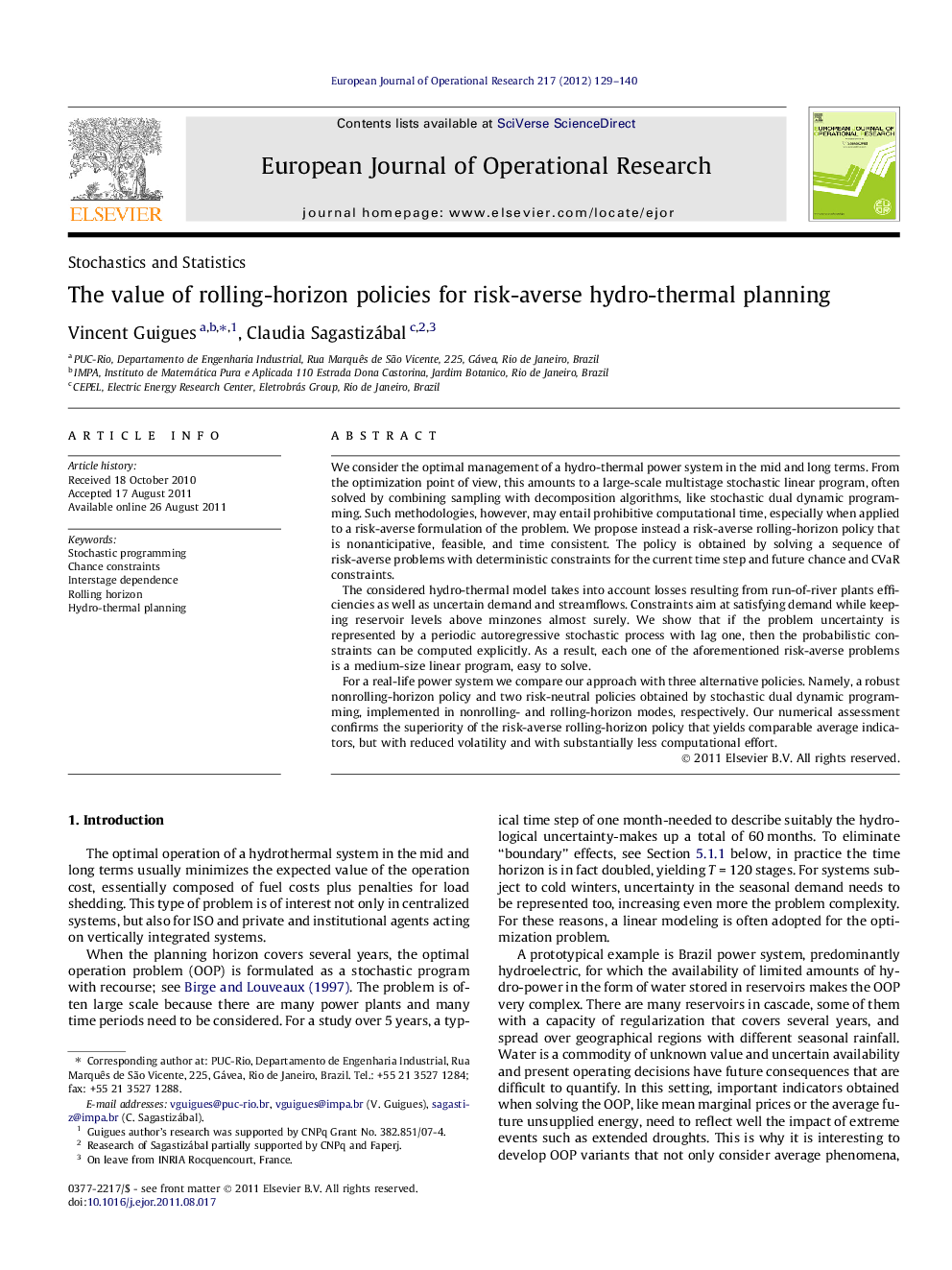| Article ID | Journal | Published Year | Pages | File Type |
|---|---|---|---|---|
| 478454 | European Journal of Operational Research | 2012 | 12 Pages |
We consider the optimal management of a hydro-thermal power system in the mid and long terms. From the optimization point of view, this amounts to a large-scale multistage stochastic linear program, often solved by combining sampling with decomposition algorithms, like stochastic dual dynamic programming. Such methodologies, however, may entail prohibitive computational time, especially when applied to a risk-averse formulation of the problem. We propose instead a risk-averse rolling-horizon policy that is nonanticipative, feasible, and time consistent. The policy is obtained by solving a sequence of risk-averse problems with deterministic constraints for the current time step and future chance and CVaR constraints.The considered hydro-thermal model takes into account losses resulting from run-of-river plants efficiencies as well as uncertain demand and streamflows. Constraints aim at satisfying demand while keeping reservoir levels above minzones almost surely. We show that if the problem uncertainty is represented by a periodic autoregressive stochastic process with lag one, then the probabilistic constraints can be computed explicitly. As a result, each one of the aforementioned risk-averse problems is a medium-size linear program, easy to solve.For a real-life power system we compare our approach with three alternative policies. Namely, a robust nonrolling-horizon policy and two risk-neutral policies obtained by stochastic dual dynamic programming, implemented in nonrolling- and rolling-horizon modes, respectively. Our numerical assessment confirms the superiority of the risk-averse rolling-horizon policy that yields comparable average indicators, but with reduced volatility and with substantially less computational effort.
► We consider the optimal management of a hydro-thermal power system in the mid-term. ► The hydro-thermal model takes into account losses for run-of-river plants. ► Inflow and demand are modelled by periodic autoregressive processes. ► Uncertainty is dealt with using a rolling horizon approach and chance constraints. ► All theoretical innovations are backed by intensive numerical results.
